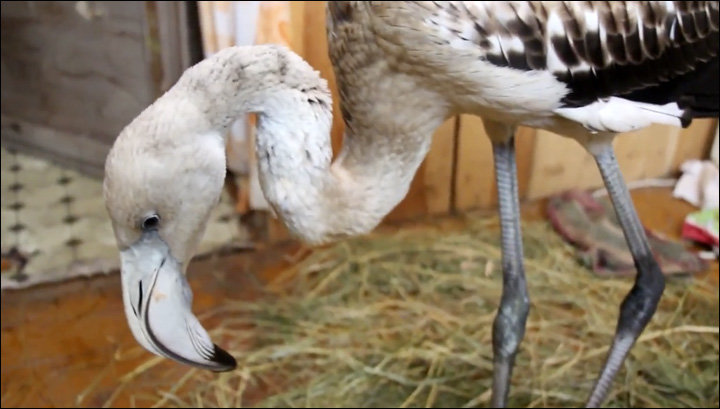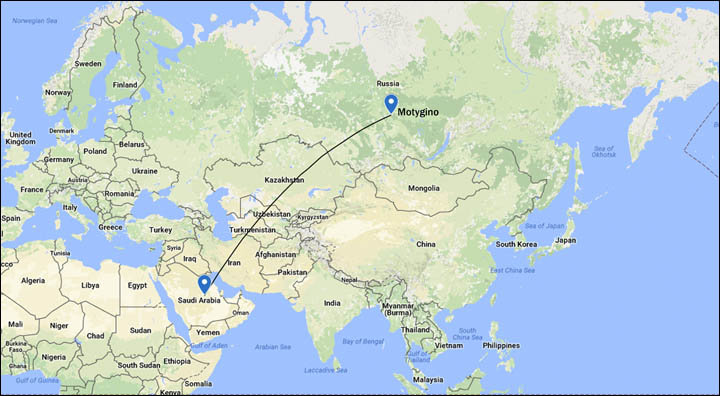
The weak and exhausted flamingo landed on the Angara River, some 397 kilometres north of Krasnoyarsk city. The bird was too frail even to retreat when local children in Motygino village came to inspect it.
Carefully, they picked up the bird and took it to the home of Antonina Maisa where the family named it Vasya and fed it on shrimps. Now the unexpected visitor is gaining strength.
We would like to pass the flamingo to a zoo or shelter with rare birds,' she said. 'Somewhere the flamingo will be comfortable, alongside companions with whom it can communicate. Ideally, the same bird breed, or at least from the same region.'
The head of Motygino village Alexey Khramtsov posted a plea on his Facebook page asking his friends to find a home for the bird.
An expert at Krasnoyarsk zoo Royev Ruchey, Irina Vorontsova, said the bird had got muddled when heading south - probably from Kazakhstan - to Saudi Arabia or elsewhere in the Arabian peninsula.
'It happens that sometimes a bird is not strong enough, and it goes astray, flies in the wrong direction,' she said. 'There's quite a different temperature, the bird gets frostbite.'
She said: 'If for two or three days it cannot find proper food, this is very critical for the birds.' In fact, this is the first recorded flamingo this winter, but the trend of the birds heading north instead of south is increasing.
Last year the birds were spotted in the Altai Republic, Kemerovo region and Turukhansk (Krasnoyarsk region). In 2014 flamingos arrived in Tomsk region, the Evenkia district of Krasnoyarsk region, the Altai Republic and Kemerovo region.
They are likely to be from Tengiz Lake in Kazakhstan. They usually begin their migration in late August and go astray with a sudden wind change.




a sign of distress, no? Who can blame the bird for trying to avoid the house of Saudi sin?